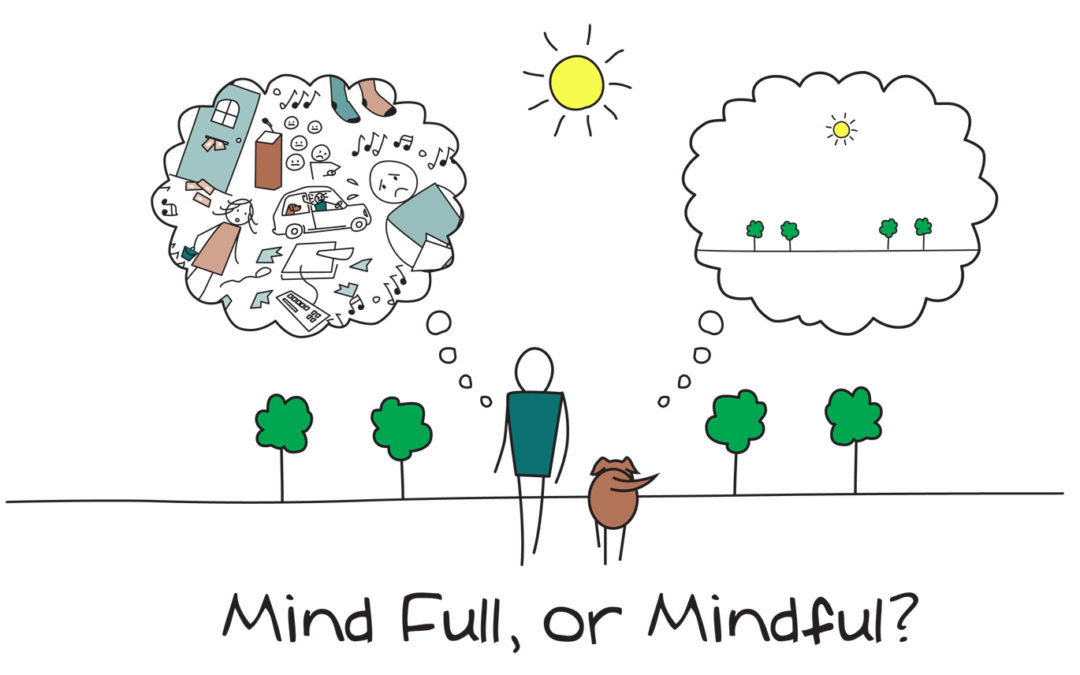By Michelle Jenck, M.Ed., YOW Coordinator
We don’t know what we don’t know. What sounds like an obvious statement is really the fundamental concept behind the “Mindfulness” movement we are hearing and seeing so much about. Awareness creates the potential for change. If we are seeking change, we must first become aware.
Too often, we find ourselves in a frenzied, unhappy and unsettled state-of-mind. Many people simply feel there are not enough hours in a day. Cultural norms tell us that multitasking is good, that “busy-ness” is both normal and noble. People are told to learn to say “no” but find it difficult because everything seems to be of equal and vital importance.
This constant state of activity and worry places a heavy toll on both the mind and the body. It can contribute to anxiety, depression, addiction and damaged relationships. An overloaded nervous system, in a constant state of fight-or-flight, produces chronic stress that has far-reaching effects.
Enter Mindful-Based Stress Reduction. Through a regular practice of cultivating awareness of experiences and sensations and learning to view them without judgement, things begin to fall into place. Priorities shift and emerge. Our sensory system remains calm amidst a stressful day. We experience life with a sense of clarity and objectivity.
We can only change something if we know what the root of the problem is. A mindfulness practice strips away every voice – including our own. We become an interested observer of what is happening in the body and the mind. It is like watching a movie with flashbacks and foreshadowing. We are “let in” on the back story that explains the characters’ behavior.
The practice itself can be as simple as spending five minutes each day, sitting quietly, breathing deeply and simply being present with acceptance. We accept who we are, where we are, just as we are in that exact moment. Thoughts may come and go and that’s okay. Often, they provide clues as to the source of our anxiety, past hurts, and frustrations. Rather than stuff them or block them, we allow these thoughts and feelings to appear. We greet them at the door but we don’t invite them to stay.
While a regular, defined practice is ideal, we can incorporate mindfulness into everyday activities. We can catch ourselves reacting to a situation and tune into it through our mindfulness viewer. Research shows that awareness in and of itself is enough to alter patterns of behavior. It takes on a snowball effect. The more we catch ourselves, the more quickly we hit the reset button until the brain recognizes the situation as non-threatening and resets itself. It is important to remember that, when we catch ourselves in an unhealthy habit, we do not attach any negative self-criticism. Acceptance without judgement is key. Setting an intention for healthier behaviors and self-healing are equally important.
As with any new task, the more often we practice the new habit, the more automatic it becomes. And just like building our muscles or mental focus, regular practice creates a new default. Two important benefits of a mindfulness practice are nonreactivity and self-regulation. Without expressly working to develop them, these two traits emerge. We often only realize it when we catch ourselves remaining calm in a situation that would have generated fear or anger before.
Mind-body classes such as Qigong, Tai Chi and Yoga include a component of mindfulness. Locally, class schedules can be found in the TBCC course catalog under the community education, Fitness & Health section. You can also join – or even start your own – mindfulness mediation group.

